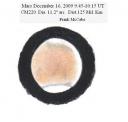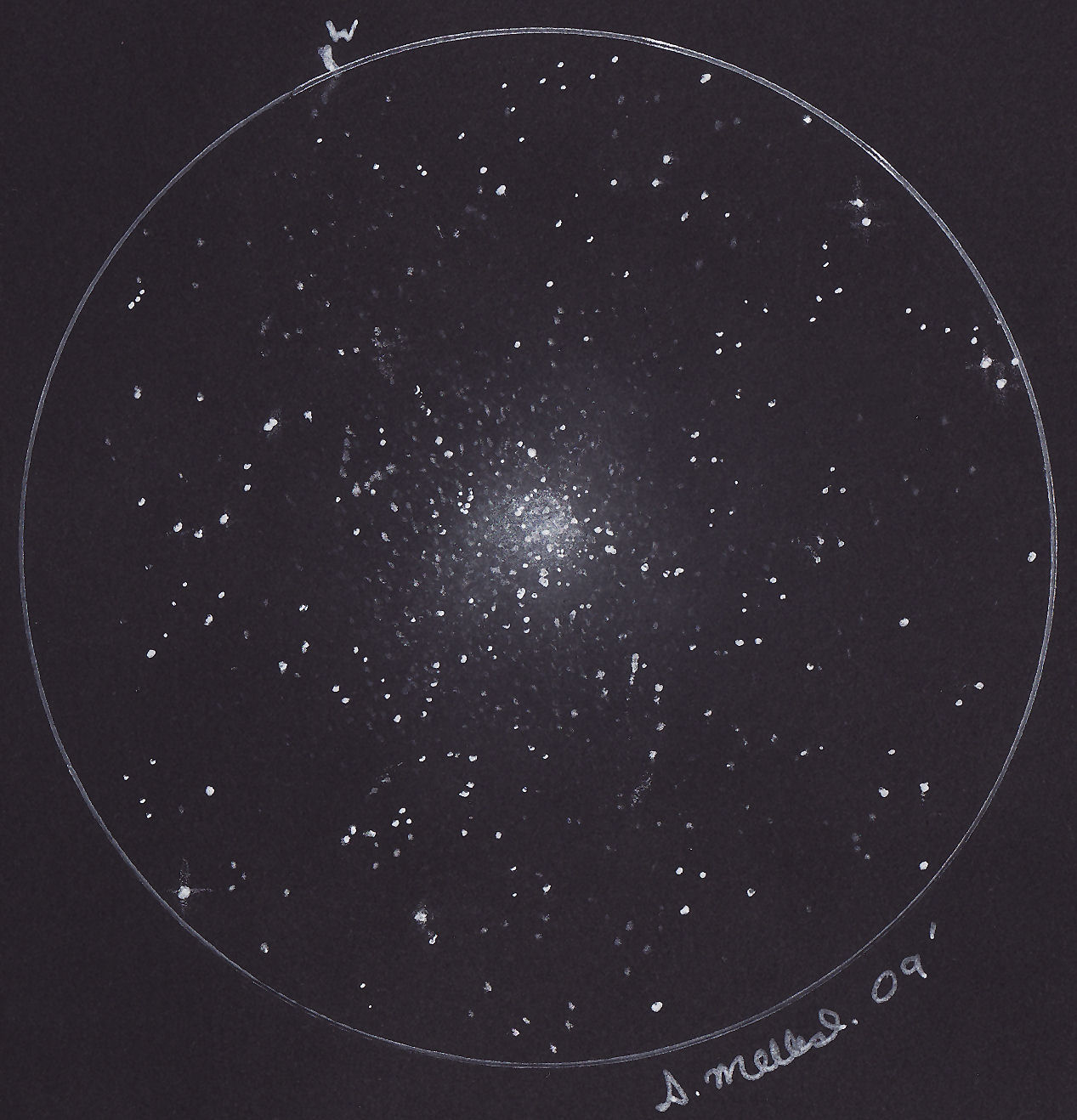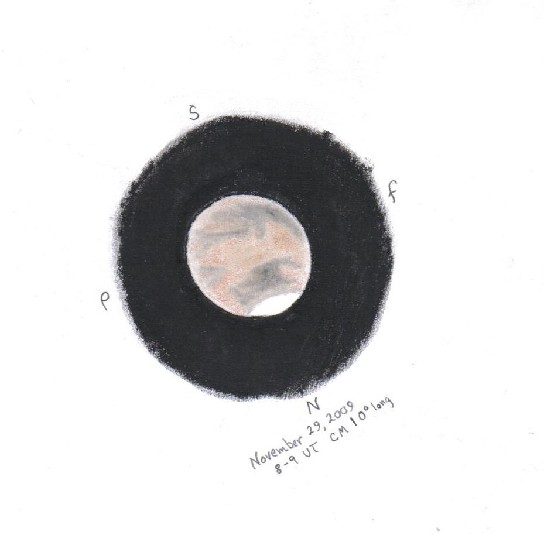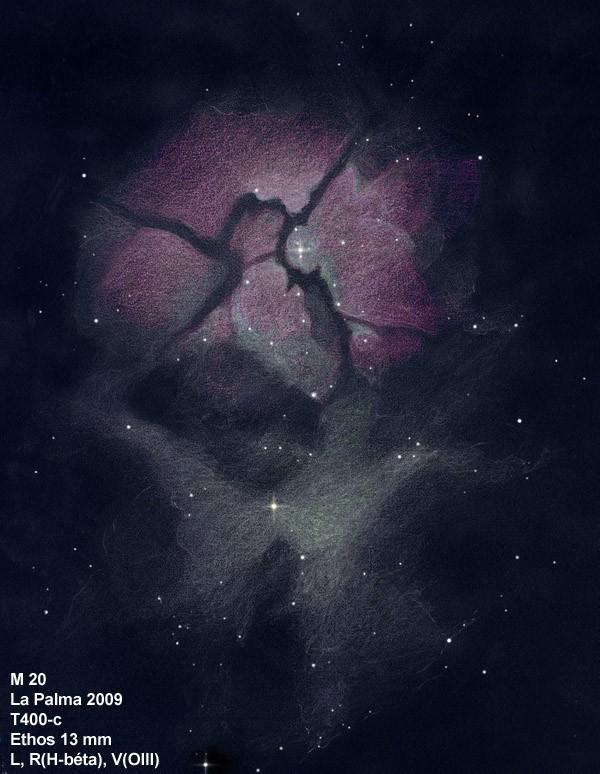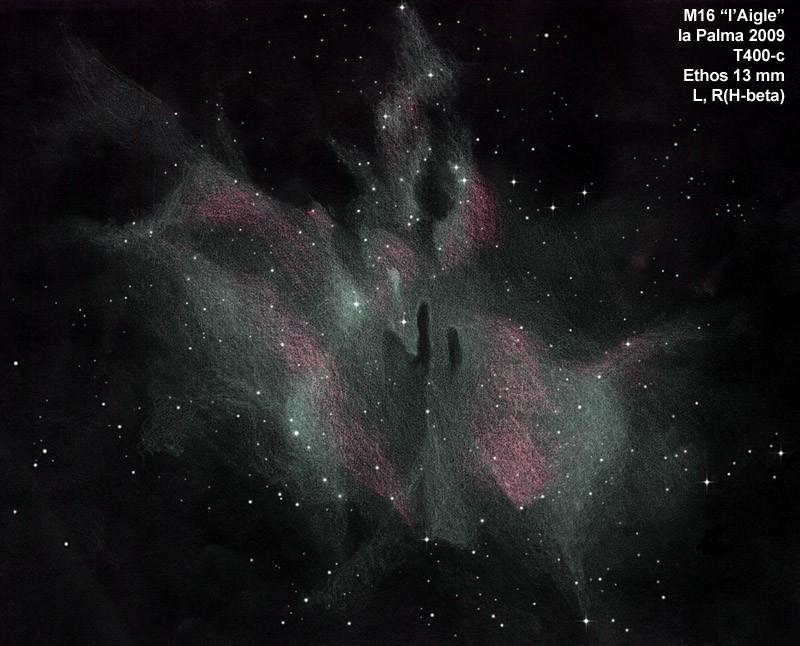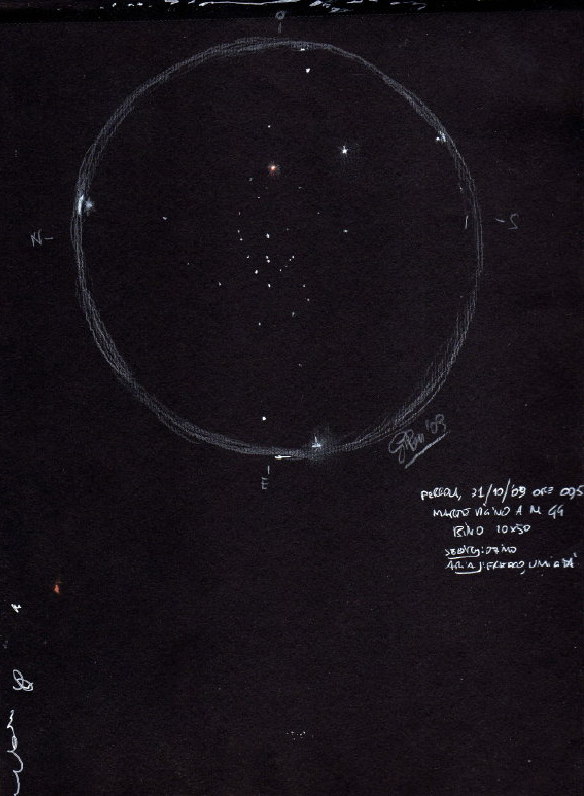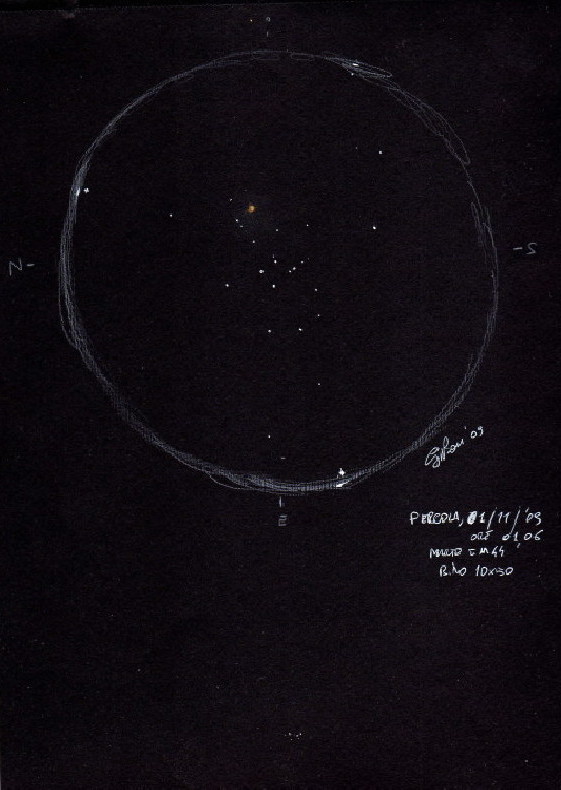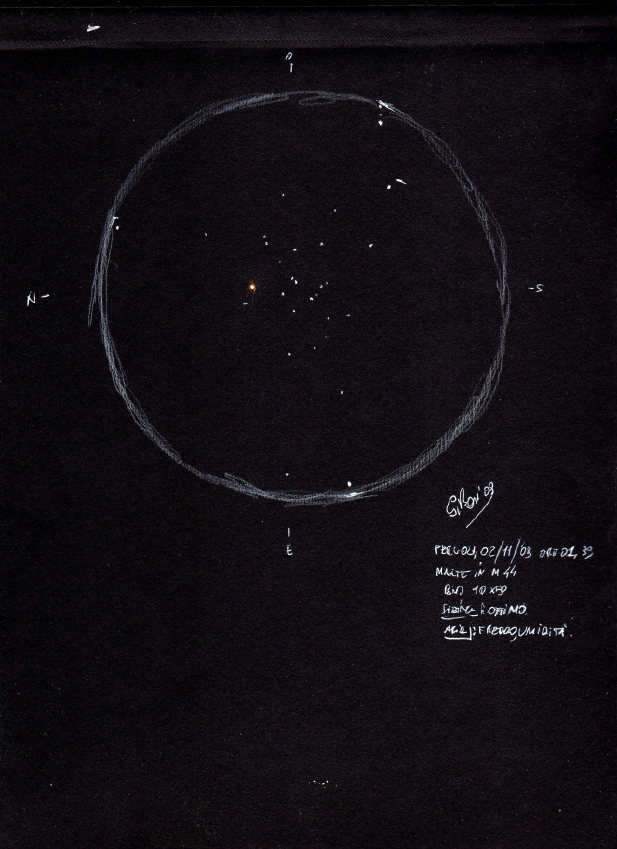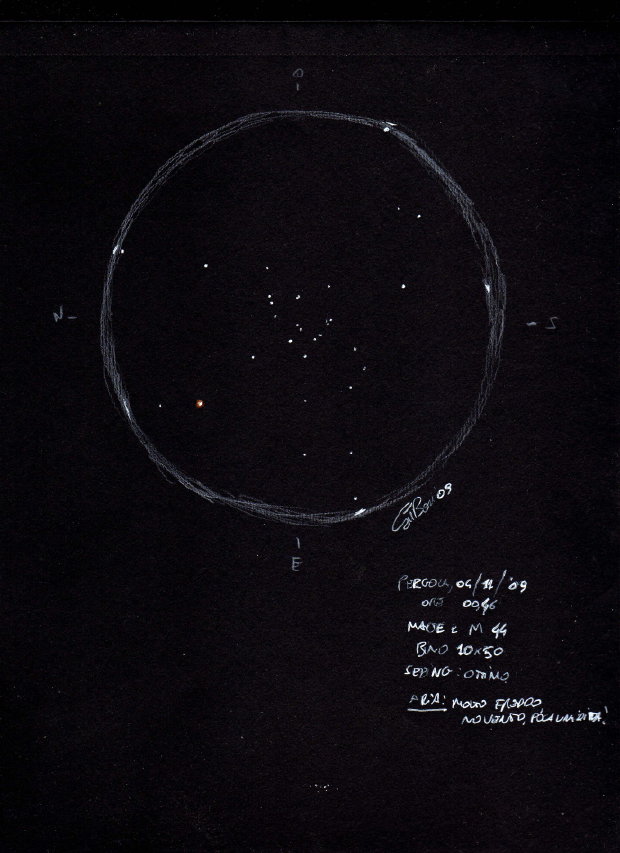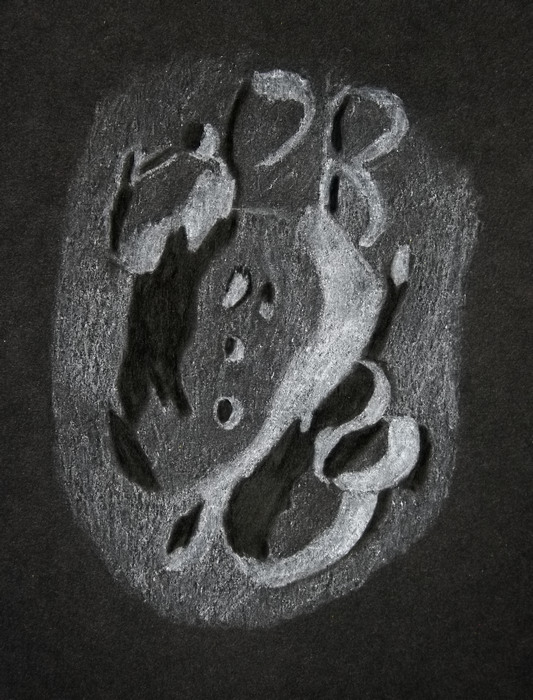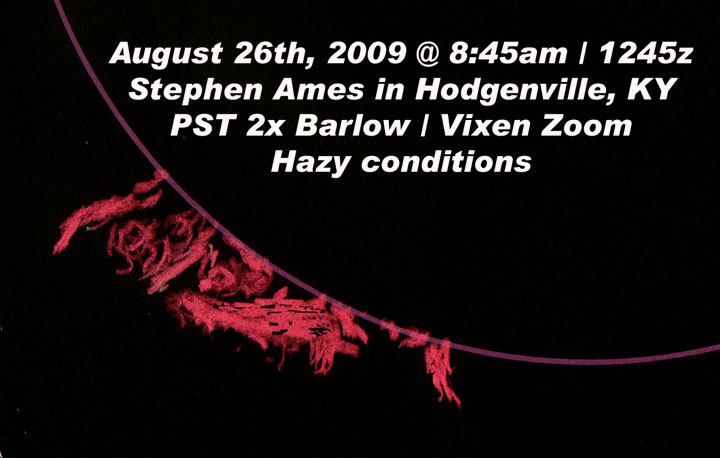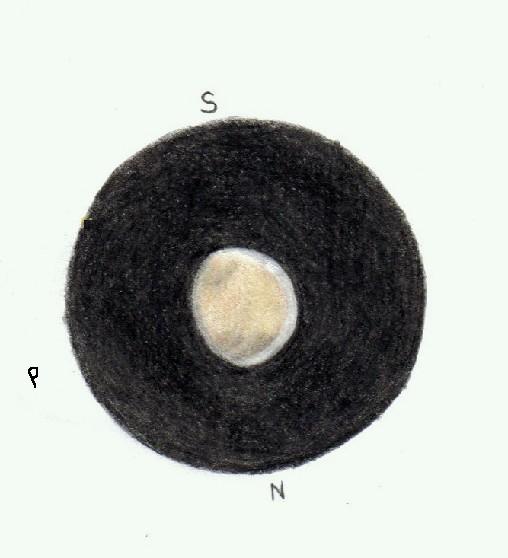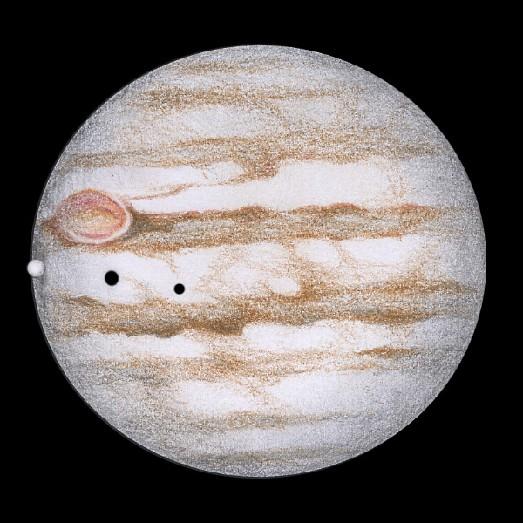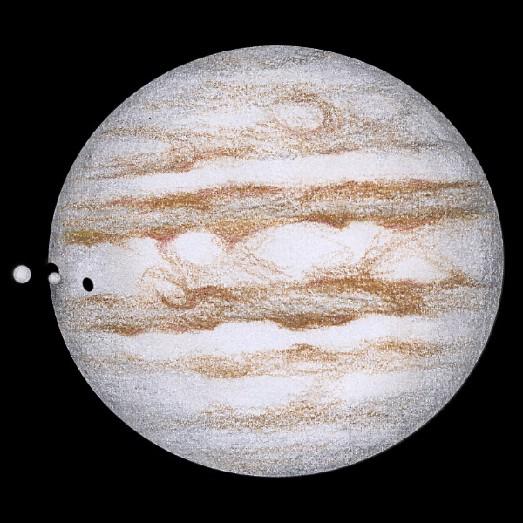
Mars – December 16, 2009, 9:45 – 10:15 UT
Sketch and Details by Frank McCabe
Mars December 16, 2009
It was a cold, clear, moonless, early morning with Mars high in the southern sky. The mirror of the telescope took some time to cool down as the temperature continued to drop on this night and early morning. Mars was very bright at visual magnitude -0.4, 93% illuminated and 77.5 million miles from us.
My fingers were numb in just 10 minutes of sketching so I was inside at 10 minute intervals to thaw them.
I decided to make a graphite field sketch and when I finished I converted it to a color pencil sketch indoors. After completing the color sketch I returned to the scope with the sketch to check for accuracy and then concluded.
I did not spend any time trying filters and the seeing was about average (Antoniadi III). Mars is inverted in the sketch with the north polar cap down and the preceding side to the left.
Don’t miss a chance to have a look.
Sketching:
White sketching paper 8″ x 11″; HB graphite pencil, soft charcoal pencil for sky background, blending stump for blending orange and yellow Crayola pencil shavings. Brightness decreased at scanning by -2 using scanner
Date 12/16/2009 – Time 9:45-10:15 UT
Telescope: 13.1 inch f/6 Dobsonian and 9mm eyepiece 222x
Temperature: -19°C (-2°F)
clear, calm
Transparency 4/5
Seeing: Antoniadi III
Frank McCabe
